
History Text book Early America
- Subject:
- History
- Material Type:
- Diagram/Illustration
- Textbook
- Date Added:
- 05/09/2016

History Text book Early America
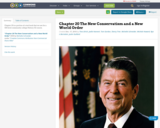
Chapter 20 is a portion of a text book that we use for a 100 level community college History 112 course.

History Text Book Chapter 2 Roots of Colonization
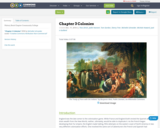
History Book Chapter Community College

History book Chapter 4, Second Generation of British Colonies
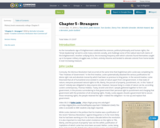
History book community college. Chapter 5
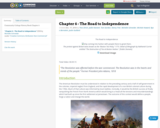
Community College History Book Chapter 6
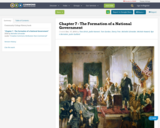
Community College History book
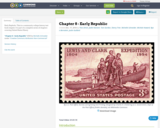
Early Repbulic. This is a community college history text book chapter. It is part of a complete series of chapters covering United States Hisory
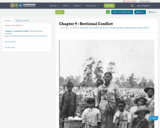
History book Chapter 9.
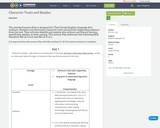
The attached Lesson Plan is designed for Third Grade English Language Arts students. Students will determine character traits and provide supporting evidence from the text. They will also identify and explain why authors use literary devices, specifically similes, in their writing. This Lesson Plan addresses the following NDE Standard: NE LA 3.1.6.b and NE LA 3.1.6.c.It is expected that this Lesson Plan will take students 2- 30-40 minute sessions to complete.

Family and Consumer Sciences and Early Childhood Education (Fix with AI)

Cistothorus palustris: Information

This first course in the physics curriculum introduces classical mechanics. Historically, a set of core concepts—space, time, mass, force, momentum, torque, and angular momentum—were introduced in classical mechanics in order to solve the most famous physics problem, the motion of the planets.
The principles of mechanics successfully described many other phenomena encountered in the world. Conservation laws involving energy, momentum and angular momentum provided a second parallel approach to solving many of the same problems. In this course, we will investigate both approaches: Force and conservation laws.
Our goal is to develop a conceptual understanding of the core concepts, a familiarity with the experimental verification of our theoretical laws, and an ability to apply the theoretical framework to describe and predict the motions of bodies.

This first course in the physics curriculum introduces classical mechanics. Historically, a set of core concepts—space, time, mass, force, momentum, torque, and angular momentum—were introduced in classical mechanics in order to solve the most famous physics problem, the motion of the planets.
The principles of mechanics successfully described many other phenomena encountered in the world. Conservation laws involving energy, momentum and angular momentum provided a second parallel approach to solving many of the same problems. In this course, we will investigate both approaches: Force and conservation laws.
Our goal is to develop a conceptual understanding of the core concepts, a familiarity with the experimental verification of our theoretical laws, and an ability to apply the theoretical framework to describe and predict the motions of bodies.
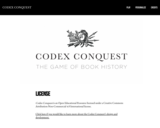
Codex Conquest teaches students to recognize the most important printed books of Western civilization by their nation, century, genre, and current monetary value. Along the way, students learn world history and the scenarios that influence the shape of collections at institutions. Suiting a variety of curricular objectives and student levels, the game can be tailored to fit subject and time specifications and is accessible to students from high school through graduate school. How deeply students engage with the content of Codex Conquest depends on your pedagogy.
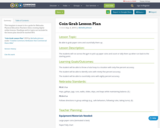
This template is meant to be a guide for Nebraska Physical Education Teachers when creating digital online lessons. Headings and/or topics not included in the lesson plan should be marked N/A.

Activities for color theory.1. Assessment of the color wheel and the terms associated with color families. 2. Color mixing activity to see how many colors a student or pair of students can make. Discussion of color and what is the favorite color they created.
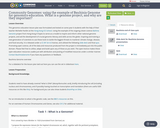
This genomics education lesson plan was formulated and tested on some year 6 students with the help of their teacher Michelle Pardini at the Hong Kong ICS School. Using the example of the ongoing citizen science Bahinia Genome project from Hong Kong it hopes to serve as a model to inspire and inform other national genome projects, and aid the development of crucial genomic literacy and skills across the globe. Inspiring and training a new generation of scientists to use these tools to tackle the biggest threats to mankind: climate change, disease, and food security. It is released under a CC-BY SA 4.0 license, and utilised the following slide deck and final quiz. Promoting open science, all of the data and resources produced from the project is immediately put into the public domain. Please feel free to utilise, adapt and build upon any of these as you wish. The open licence makes these open education resources usable just with attribution and posting of modified resources under a similar manner. Contact BauhiniaGenome if you have any questions or feedback.Bauhinia Genome overviewFor a slidedeck for the lesson plan laid out here you can use the set in slideshare here.
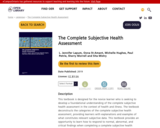
This textbook is designed for the novice learner who is seeking to develop a foundational understanding of the complete subjective health assessment in the context of health and illness. The textbook deconstructs the categories of the complete subjective health assessment, providing learners with explanations and examples of what constitutes relevant subjective data. This textbook provides an opportunity to learn how to respond to normal, abnormal, and critical findings when completing a complete subjective health assessment